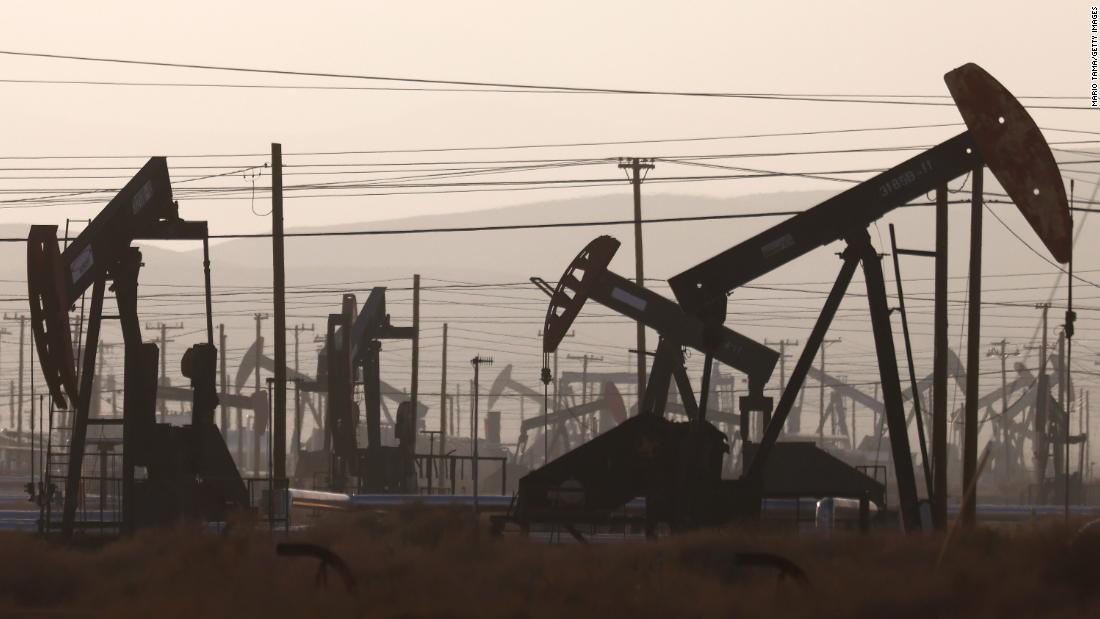
Reality check: Here’s what the COP26 deals actually mean for our future climate

Glasgow, Scotland (CNN)Delegates from around the world hammered out a number of agreements in the first week of COP26, an international summit where global leaders are attempting to limit the climate crisis.
There were a few breakthroughs, but some experts warn the deals may not meet the urgency of the moment. Specifically, experts are concerned they won’t get the world closer to limiting global warming to 1.5 degrees Celsius.
“There’s a lot of big statements, which don’t have the details underneath: exactly when, how much, who’s going to do what,” said Helen Mountford, vice president for climate and economics with the World Resources Institute.
“I think what we can say pretty confidently though, is that, no, they don’t get us far enough,” she said. “It’s not going to be keeping us under that 1.5 degrees Celsius global temperature rise.”
Here is the reality check from the CNN team in Glasgow.
Ending deforestation

The first substantial deal announced at COP26 last week was significant, after years of negotiations on how to protect forests.
More than 100 countries — including Brazil — that represent more than 85% of the planet’s forests committed on Tuesday to end and reverse deforestation and land degradation by 2030, with 12 governments promising $12 billion of public funds and $7.2 billion of private investment.
The deal is consequential. Forests, when they are logged or degrade, can emit carbon dioxide (CO2) into the atmosphere, accounting for around 11% of the world’s total CO2 emissions. It’s a fairly comprehensive deal, including key nations with some of the world largest carbon stocks locked away in tropical forests.
Reality check: On the whole, this deal is a breakthrough after fragmented agreements have come and gone over the years.
The question now is whether countries will actually do what they signed up for, and whether, in the next week, negotiators can build in a system of accountability.

The environment minister in Indonesia, which is home to some of the world’s most carbon-rich tropical forests, said on Wednesday that it was “unfair” to expect Indonesia to stop clearing forests for development.
“If the concept is that there is no deforestation, it means that there should be no roads, then what about the people, should they remain isolated?” Siti Nurbaya Bakar wrote on Twitter.
Other forest-rich nations that have seen former deals break down are also skeptical.
“The developed world has not kept its promise to support an impactful, working mechanism under the Paris Agreement to reward rainforest nations from accomplished rainforest preservation and carbon reductions,” Kevin Conrad, founder of the Coalition for Rainforest Nations, told CNN.
Ending financing of fossil fuel abroad

Twenty-five countries so far have signed on to an agreement to end the financing of unabated fossil fuel projects abroad by 2022. Unabated projects would be those that do not capture greenhouse gas emissions at the source before they escape to the atmosphere.

Several countries had already agreed to end coal financing, but this deal is the first to include gas and oil, so it’s something of a breakthrough.
“The agreement to end international public support for fossil fuels is a game changer. It effectively ends all public financing for coal plants, as there is little financing for coal outside the signatories,” said Christine Shearer, program director for coal with Global Energy Monitor.
“The agreement also acknowledges that further expansion of oil and gas — like coal — is not compatible with the Paris climate agreement. For the past few years we have seen how phasing out public money for coal has made many coal projects nonviable, leading to a wave of cancellations. Ending public money for oil and gas will similarly present a huge new hurdle to the economics of many oil and gas projects.”
Reality check: The statement opens a path to a more-official deal, but critics say it doesn’t go far enough and should include financing for fossil fuel projects at home, not just internationally.
Shearer says the the next step must be to phase out fossil fuel projects domestically.
And Jake Schmidt, senior strategic director at the Natural Resources Defense Council, points out there is still a lot more money in fossil fuels than renewables.
“There’s $17 billion in public finance going to overseas gas per year, four times the financing for renewables. That’s from the US, Japan, China, South Korea, China and development banks,” he said.
“This move away from fossil fuel finance moves the dial and puts down a marker for all countries to shift their resources to renewables. So, 20 countries getting off fossil fuel finance is real, and others need to step up, follow suit and shift to renewable energy — the sooner the better.”
Ending coal use

COP26 President Alok Sharma has said he wants Glasgow to be the place where coal is consigned to history. There has been good progress here.
Twenty-three new countries on Thursday signed a statement in which they agreed to stop approving or building new coal projects, and to phase out coal in the 2030s for developed countries and the 2040s for developing countries.

Some of the countries were big coal users, like Indonesia, Vietnam and South Korea.
In the lead-up to COP26, several countries, including China, announced they would stop financing coal projects outside their borders. China has been the world’s biggest coal financier by far, and its announcement brought the international bankrolling of coal projects to a near close.
The US, EU and UK also announced they would partly fund South Africa’s transition from coal, which prompted requests from other coal-reliant nations, like Indonesia, for similar support.
Chris Littlecott, associate director of the fossil fuel transition program at climate think tank E3G, said that the principle of ending coal use won last week, and new tools and financing are now available to make the transition away from it.
“A new chapter of the world’s coal exit effort can now begin,” Littlecott said.
Reality check: The statement is well short of an agreement that the whole world has committed to ending the use of coal by a certain date. The deal didn’t include China, India and the US — the world’s three biggest coal users, which are also the biggest greenhouse gas emitters.
Sharma and other leaders, like the UN Secretary General Antonio Guterres, had said they hoped for a phaseout of coal by 2030 for developed nations and 2040 for developing ones — the key word being “by.” But the language in the agreement — to end coal in the 2030s and 2040s — essentially means the commitments are a decade later than hoped. And that means the potential for much more greenhouse gas emissions.

China, India and the US did not sign on to the Global Coal to Clean Power Transition Statement. The new commitments take the total number of signatories to 46, and includes some big coal users, including Indonesia, Ukraine and South Korea.
Littlecott said that it wasn’t surprising that China and India didn’t sign on, but that the absence of the US was likely a result of domestic politics.
“I think if the US had been perhaps two or three weeks further on in its domestic policymaking then there would have been a much better chance of the US being willing to say something,” he said. “But given the shenanigans in Capitol Hill, it’s unsurprising that they didn’t.”
The targets fall short of what experts, including the International Energy Agency, say is required to achieve net-zero by 2050. Net-zero emissions can be achieved if countries reduce current greenhouse gas emissions and also remove some of what’s already in the atmosphere, so the net addition is zero.
Who should pay

More than a decade ago, wealthy nations agreed to transfer $100 billion a year, starting in 2020, to the developing world to address the climate crisis. The funds should help developing countries reduce emissions by transitioning from fossil fuels to renewables, but also to adapt to climate impacts, which could include infrastructure to stop flooding or upgrading homes to withstand more extreme weather.

A report published by the COP26 presidency ahead of the summit found that with the current pledges, the goal wouldn’t be reached until 2023, three years after the target. That lack of funding has created mistrust among developing nations of richer countries.
But a number of countries have made new pledges during COP26, including Japan, Spain and Switzerland, and on Thursday, US climate envoy John Kerry and European Commission President Ursula von der Leyen said the target could be met by 2022, according to Reuters.
Reality check: While some leaders are celebrating the closing gap, Sharma has said it is clear the $100 billion a year, when it’s reached, won’t be sufficient.
“Obviously, the $100 billion goal was first talked about in 2009 and then in 2015 in Paris. I mean, what I would say is that I think we all understand that it’s a significant amount of money,” Sharma said. “However, report after report internationally suggests that we’re going to have to mobilize trillions of dollars a year to support the transformation of economies around the world.”
A report published by the UN Environment Programme earlier in the week found that $100 billion a year is no longer enough to match the demand. Adaptation costs alone for low-income countries will hit $140 billion to $300 billion each year by 2030 and $280 billion to $500 billion per year by 2050, UNEP reported.
Methane emissions

On Tuesday, around 100 nations and parties signed on to the Global Methane Pledge to cut methane emissions by 30% from 2020 levels by 2030, an initiative the US and EU launched in September.
Methane, which is the main component of natural gas, is an extremely potent greenhouse gas, and scientists say limiting methane emissions is one of the quickest ways to turn the dial down on global warming.
Invisible and odorless, methane has 80 times more warming power in the near-term than carbon dioxide. That makes the agreement a big deal, and scientists say that if countries stick to it, it will have a major impact.
This pledge is a breakthrough agreement that has rapidly gained buy-in.
“This is the first global commitment on reducing the potent greenhouse gas methane, and it’s an incredible step forward … presidents and prime ministers standing up and recognizing that reducing methane is the strongest lever we can pull to rapidly and substantially reduce the rate of warming,” said Sarah Smith, a program director at Clean Air Task Force.
She said the success of the agreement will depend on enforcement, especially when it comes to the oil and gas industry, which is a major source of methane emissions because of leaks.
Reality check: The deal was billed as great news and welcomed by experts, but it can only go so far without the world’s three biggest methane emitters — China, Russia and India — which haven’t signed on.
Those three countries account for roughly a third of all global methane emissions, according to the WRI.
Australia, which is among the top 10 methane emitters, also declined to sign on. Australia’s large coal mining industry fuels its high methane emissions.
Source: http://rss.cnn.com/~r/rss/cnn_topstories/~3/rx9mjbDZLVU/index.html
















